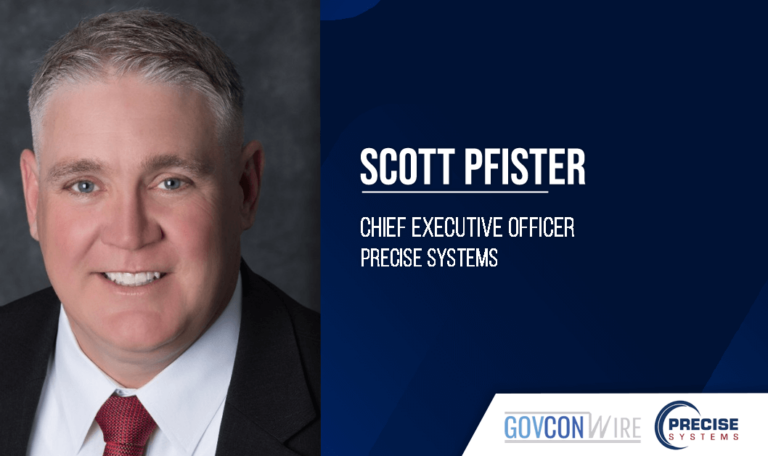Justin Woulfe is the chief technology officer of Systecon North America, a company focused on bringing cutting edge lifecycle management and operational readiness services to a variety of industries, including the defense sector. Since we last spoke with Woulfe in January, he and his cohort have been busy: they’ve successfully secured and renewed numerous contract awards in the maritime and defense sectors and have actively pursued partnerships with both private and public entities to address critical national security challenges, especially in the realm of contested logistics.
Woulfe says the Systecon North America team has been zeroing in on understanding and fulfilling the Department of Defense’s needs when it comes to digital transformation, digital engineering and digital sustainment practices. Woulfe is passionate about the predictive analytics tech that his company specializes in, and believes there is currently leadership in Washington and at the Pentagon that is serious about utilizing it on a mass scale. 2023 has offered a chance for Systecon to make previously theoretical concepts into tangible realities.
Furthermore, in an Executive Spotlight interview, Woulfe delved into how recent geopolitical developments, including the conflict in Ukraine, have influenced the military technology landscape and discussed the company’s strategies to address the heightened demand in this context, among other subjects.
Where are you seeing the most exciting opportunities to deliver better capabilities to our warfighters today, and how are you harnessing these opportunities?
There’s quite evidently a lot going on geopolitically. As we think about the impacts of these conflicts on the defense industrial base, warfighter readiness is key. It’s also important to keep in mind that, for 20 years, we fought a conflict with an unconstrained sustainment enterprise, both from a financial perspective as well as a threat environment today. However, the complexity of the battlespace, whether in a traditional or cyber domain, means we have to consider our next actions. We can’t simply fly parts around the world without thinking about the threat or our competition’s actions. That’s new, especially for the Department of Defense and our allied partners, where we haven’t faced a threat when going to battle in four decades.
It’s a very interesting shift. The exciting part is that many of the complex systems developed over the last 30 years are now being put to use. Complex air defense systems, armor, aircraft systems, including the fifth and what will become the sixth-generation aircraft, are being utilized. Having technological superiority is helping us in the battlespace. On the flip side, we must now sustain this more complex equipment, which is complex both technologically and from a sustainment enterprise perspective.
From our perspective, the opportunity is helping our customers do so effectively. It’s exciting because this isn’t just theoretical. What we’re doing with the Patriot missile system, ballistic missile defense radars and stealth aircraft is actual operational employment in the battlespace. The decisions we make regarding readiness and optimizing outcomes are real. These aren’t just war gaming exercises anymore.
What’s your outlook on the global defense landscape? What significant changes or trends are you seeing, and how are those factors moving the GovCon market?
The demand signal or the increase in demand for these complex systems is there. The production requirements for artillery shells, surface-to-air missiles, anti-aircraft systems and everything that makes modern warfare possible are in high demand. When we look across the defense industrial base, there’s a lot of opportunity to respond to that demand signal.
We’ve seen some interesting things. Of course, we typically talk a lot about sustaining the weapon systems themselves, but in order to respond to the increased demand signal, if we think about artillery round production as an example — and something that’s been a hot topic across the Army and globally in the past 18 months — we’re not going to get there using the labor-intensive production methods of the past.
This is applicable to a wide range of weapon systems. The level of automation and manufacturing necessary in the defense industrial base is the only thing that’s going to get us there from a capacity and capability perspective with production. Those systems, however, are just as complex as the weapon systems we talk about needing to sustain and maintain readiness levels for. So, the DIB is responding by standing up automated manufacturing facilities. But we also need to think about the sustainment of those production systems in the same way that we talk about sustaining the weapon systems themselves.
When we think about the outlook on the global defense landscape, I believe that the demand signal will remain in place for a long time, which means we’ll see more and more demand for production capabilities that enable us to meet that demand without the kind of labor-intensive methods of the past. That harks back to the Korean War and World War II. So, we’re seeing a lot of modernization efforts, but those modernization efforts need to be coupled with the same kind of sustainment analytics that we apply to the weapon systems themselves.
What do you think is the number one lesson we can learn from the Russian invasion of Ukraine? What information have we gathered that will help the U.S. military to better prepare for and respond to future conflicts?
I don’t think it’s any surprise that we’ve seen how these systems that I was talking about before are finally being operationally employed against a near-peer competitor. Whether we’re talking about fighter aircraft, ground armored vehicles, naval systems or anything else, we’re employing them operationally. What we’re seeing is that these systems are performing better than we could have expected. There’s a public news story about Patriots shooting down a Russian hypersonic missile that was supposedly unable to be shot down. We’re seeing how effective the DIB is in meeting the challenge posed to us by our competition, which is really cool.
As we think about the lessons learned from the Russian invasion of Ukraine, it’s clear that the U.S. DIB is performing exceptionally well. We’re meeting the challenge, producing and delivering systems to our warfighters that are more operationally effective than we could have imagined. The information we’ve learned from the Ukraine conflict will help us meet any threat from a near-peer competitor in the future. This has been an amazing proving ground for the effectiveness of U.S. defense manufacturing capabilities and technological capabilities as well. That’s quite heartening, and we know we have technological superiority in the space that should help us prepare for and respond to future conflicts. It should be eye-opening for those who may question the defense superiority of the United States.
What are some of the more notable software developments you’ve witnessed in your career? What is Systecon currently working on that you’d like to share?
As we’ve seen this concept of predictive analytics evolve, a lot has changed. In the past, an analyst would receive a bunch of Excel spreadsheets or something in that vein, plug them into a model and that math model would take hours or days to run, producing a PowerPoint report. Some number of weeks or even months after the request for analysis, something would be presented to the analyst.
As we’ve seen the desire for more real-time predictive analytics, we’ve focused our software development efforts on new algorithms or modifications to existing methods to operationalize the software, providing our customers with closer to real-time predictive analysis, whether that be artificial intelligence or a better data transfer mechanism to pull operational data from the systems and skip the complex spreadsheet production process. We aim to get the analytic tools into the hands of operators and unit commanders much faster.
We’ve really focused our efforts on the speed of decision-making. We already have some of the most advanced algorithms and analytics methods fielded today. A big part of our development effort has been speeding up the process of delivering results and making effective decision support available immediately at the time of need, rather than days, weeks or months after the fact. We’re seeing the effectiveness of assisting deployed units with defensible analytics, as well as those in the Pentagon overseeing operations and delivering results rapidly, avoiding traditional delays associated with solving analytics challenges.















